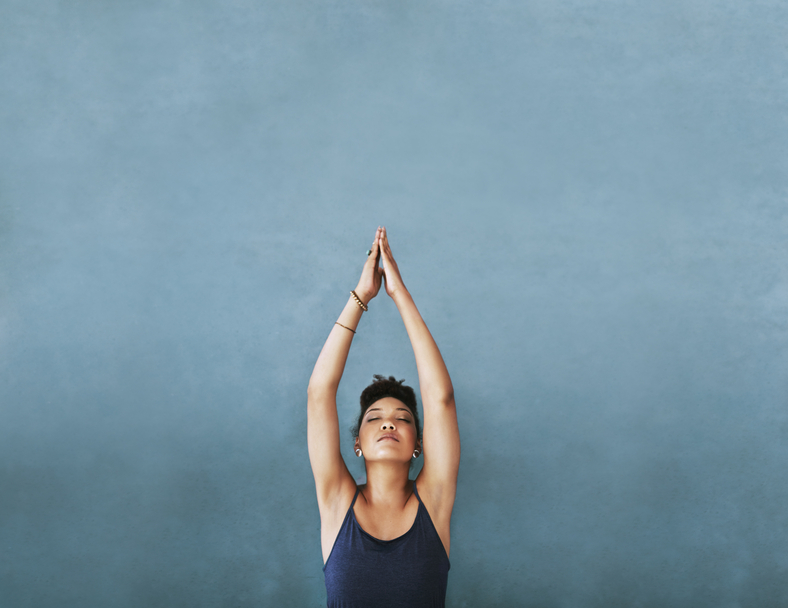
Addiction recovery is a complicated road, made ever more twisted and convoluted by the many paths it can be composed of. Two people struggling with sobriety from the same drug addiction could go through entirely different programs and come out the other end fulfilled and determined to stay clean. Yet there are many who feel skeptical about alternative approaches to addiction recovery, particularly in the fields of mindfulness, meditation and yoga.
However, a little research and a lot of examples go to show that the physical and mental aspects of a yogic lifestyle – or even just the casual adoption of yoga as a regular exercise program – influence those struggling with sobriety, and people in general.
Scientifically, that influence has been under scrutiny, particularly as researchers consider the validity of fitness and mindfulness therapy – therapeutic exercises that challenge patients to focus on something, and forego distraction. The proposed benefit of such a therapy is increased self-control, improved self-esteem and a lower likelihood of episodes of depression and anxiety.
In its simplest context, mindfulness is the ability to better focus on what you feel is most important. So how does that translate into recovery from addiction?
Mindfulness & Addiction
Addiction is a disease of the brain, yet exactly what that means matters. Some scientists argue that there is evidence of addiction being a neurological affliction – it changes the way the brain works and looks, affects your state of mind, and becomes a chronic illness highlighted by a high relapse rate and the challenges of staying sober, even after detox and rehab.
Others assert that addiction is a learning and development disorder, because it’s mostly (but not entirely) rampant among youth, and is otherwise tied to mental disorders such as depression and anxiety.
Either way, addiction is a condition wherein a person is compelled to use drugs to cope with something, from a certain type of behavior to a feeling of shame, or a past trauma. Even among those who developed addiction due to unfortunate genetic circumstances or to fit into a social circle, long-term addiction will have a largely negative impact on your life, and can send you down a spiral of self-loathing and depression.
Even at the root of every cause of addiction, there lies a dysfunction. No one turns to an addictive substance without having a compelling reason to, not with the existing common education on the danger of drugs. Kids today don’t turn to drugs because they love the health benefits, but because there’s a need for them, perhaps as a social lubricant, as a ticket to a feeling of belonging, to bolster their self-esteem and reduce their anxious inhibitions.
Adults do the same thing, covering up what they don’t like about themselves and their lives with a drug. People in fields of immense success are under pressure day and night. In every life, we all carry around a little bit of unhappiness, and some of us carry around much more than others.
When it comes to addiction, rehab is typically the first step out of this hole. Residential treatment facilities offer detoxification and tips for early recovery to teach someone how to cope with what they’re going through. After the initial shock of detox and the passing of withdrawal symptoms, people dealing with addiction will often feel a wave of fear, depression, anxiety or pessimism overcoming them. All issues that might have been brought up over their time as addicts were previously suppressed, and sobriety forces them all out.
When such issues see the light of day and the initial coping mechanism is forbidden, people can turn bitter and angry. They begin to regret, to feel guilty. Overcoming those emotions – realizing that it’s okay not to have something, or to let go, or to make amends and move on – is key to long-term sobriety. These emotions can’t be drowned out by partying, drugs, friends or spirituality – they’ll always return in full force, ready to knock you off your feet. And so, they must be resolved.
Yoga for Recovery
That is where mindfulness & yoga come into play. It’s relatively easy to lose yourself in a maelstrom of negativity when dealing with the emotional consequences of an addiction. Mindfulness exercises teach you to focus on a simple, inconsequential concept or point of reference to avoid overthinking, worrying, and panic. Mindfulness is expressed by making a conscious choice to reject a negative thought, and instead focus on the positive possibility. It’s useless to make a fuss over things that haven’t happened yet – such as fearing that your family will reject you despite your recovery because of what you’ve said and done in the past – instead, mindfulness allows you to calm your mind and take away the power that pessimistic thought and depressive thinking holds over you.
This concept – the ability to control how you think, to deny a line of thinking and instead convince yourself to turn it all around – is directly related to the usefulness and meaning of yoga as a tool for addiction recovery.
Understanding Yoga
Yoga as a school of thought is ancient, and its teachings refer to eight limbs – concepts that describe what yoga is meant to do. Each of the eight limbs gives you an overall idea of what you should aim for in a meditative session, and they help you understand why yoga is an excellent choice to calm the mind and introduce better focus and stability in recovery:
- Yama: the essential moral values of yoga, including non-violence, honesty and non-avarice, or the absence of senseless greed.
- Niyama: the goals of the mind, or certain virtues that should be strived for, such as contentment, a clear mind, contemplation of spirituality, self-reflection and persistence in life.
- Asana: the actual movement of yoga, described as a series of poses and posture meant to be “steady” and “pleasant”, eliminating the shaking of the body through focus.
- Pranayama: the focus of breath, both continuous and in a series of suspended inhalation and complete inhalation.
- Pratyahara: the process of slowly cutting out the outside world to focus entirely on the yoga itself, and your thoughts.
- Dharana: this is the point in practice where you concentrate on a single concept, subject, or thought in your mind, returning to it when you drift, and remaining in focus.
- Dhyana: once you have a point of focus, Dhyana is meant to be the contemplation of that focus – thinking about a subject or concept and exploring every imaginable perspective, point-of-view, description and personal conclusion.
- Samadhi: this is the last step, a point in your practice wherein every aspect of yoga flows together to leave you completely entranced and focused only on whatever it is you decided to commit yourself to in that session.
More than a form of exercise, yoga is an expression of mindfulness – and one that can steel your mind and help you develop immense focus and self-contentment. There is a bit of spirituality in there – contemplating the self may also mean contemplating the universe, and practicing a bit of personal philosophy and soul-searching – yet there is no need to believe in a higher power to practice yoga.
All you need is a posture or position that might challenge you, and the time to make that position comfortable, while focusing entirely on a single, relevant thought. Returning to this thought repeatedly, or coming up with new points of focus, allows you to quickly quiet your mind and think of something more constructive when negativity and depression strikes, and the urge to use grows.

